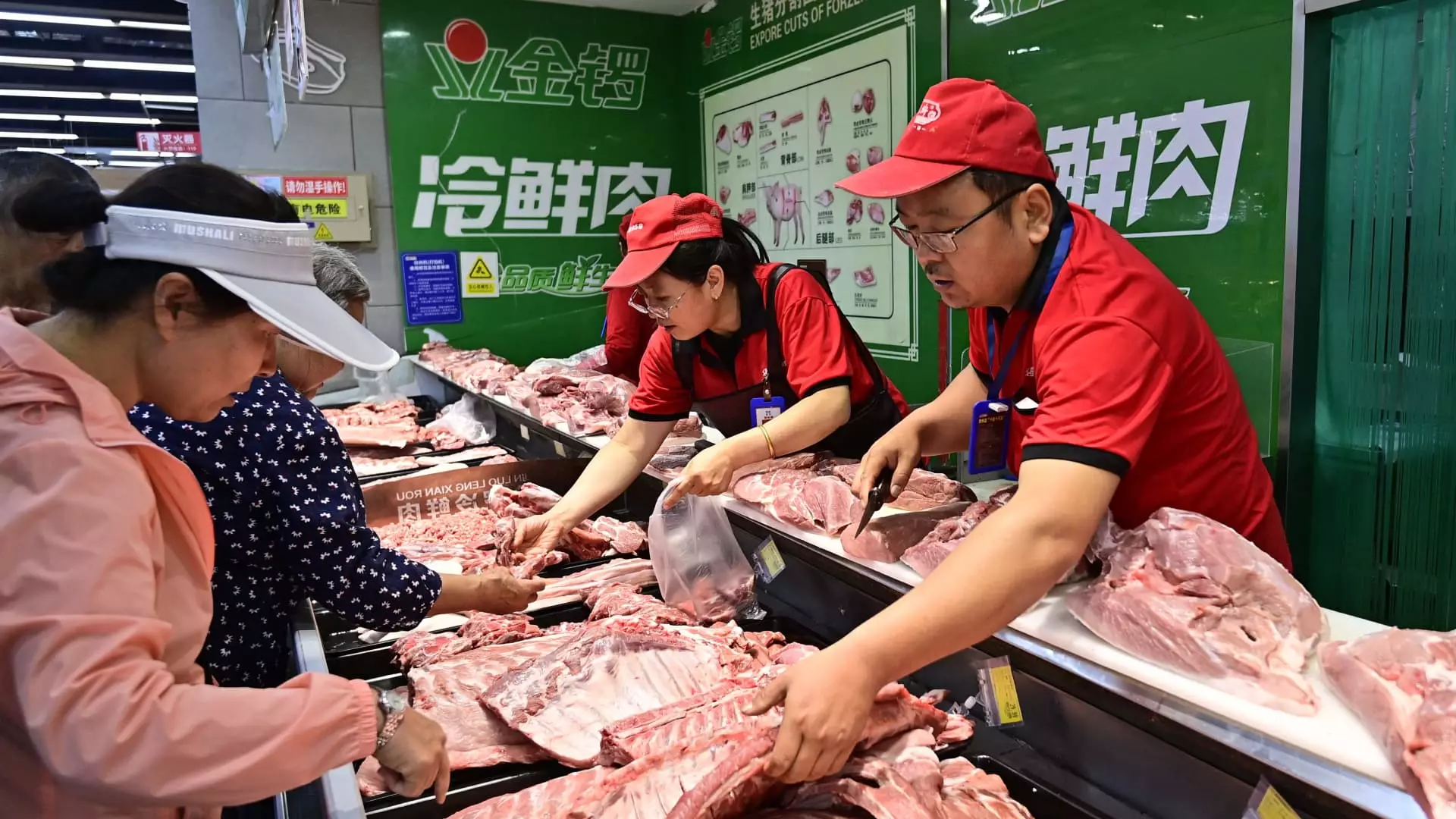China’s consumer price inflation saw a mere 0.2% rise in June compared to the previous year, falling short of expectations. According to data released by the National Bureau of Statistics, the consumer price index was anticipated to increase by 0.4% year-on-year. These figures indicate a slower than expected pace of inflation in the Chinese economy.
On the other hand, producer prices fell in line with forecasts, with the producer price index experiencing a 0.8% decrease from the previous year. The index measures factory-gate prices, and the consistent decline aligns with predictions. Despite the stability in producer prices, concerns about deflation persist in China, reflecting the fragility of the economy.
Inflationary Pressures from Specific Sectors
Pork prices soared by 18.1% in June year-on-year, while beef prices witnessed a significant drop of 13.4%. Additionally, tourism prices rose by 3.7% compared to the previous year, although this growth was a decline from the previous month. These sector-specific price movements reflect the diverse inflationary pressures present in the Chinese market.
Zhiwei Zhang, the chief economist at Pinpoint Asset Management, highlighted the ongoing risks of deflation in China due to weak domestic demand. Despite efforts to stimulate economic growth, reliance on exports remains a key strategy. Zhang emphasized the need for sustainable domestic consumption to combat deflationary risks and ensure long-term economic stability.
The lackluster domestic demand in China has resulted in subdued inflation rates, setting it apart from major economies like the U.S. where inflation has remained relatively high. This disparity underscores the challenges facing the Chinese economy and the importance of revitalizing consumer spending to drive sustainable growth.
China’s inflation rates falling short of expectations underscore the complex dynamics at play in the economy. With deflationary risks looming and subdued consumer demand, policymakers must address these challenges to ensure stable economic growth. By fostering a balance between domestic consumption and export-driven growth, China can navigate these uncertainties and uphold its position as a key player in the global economy.

